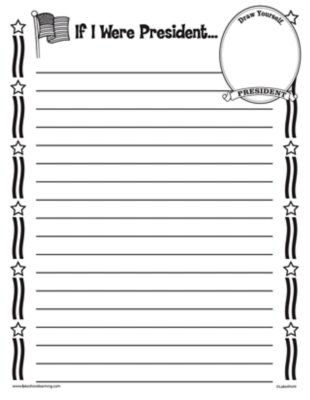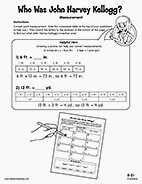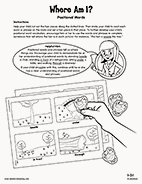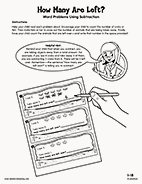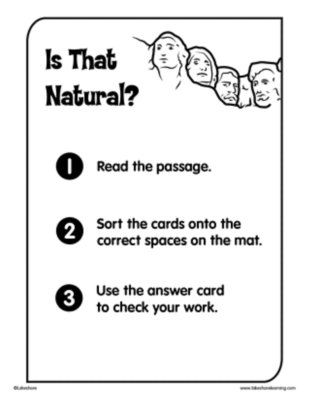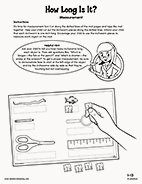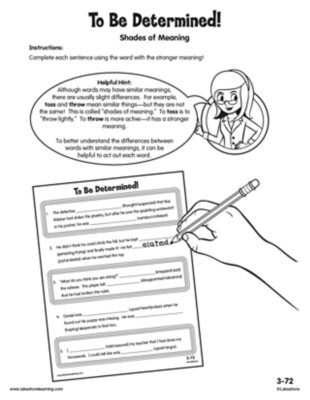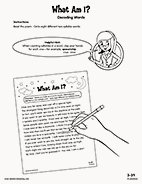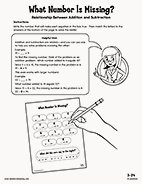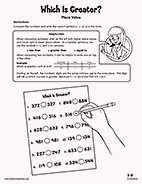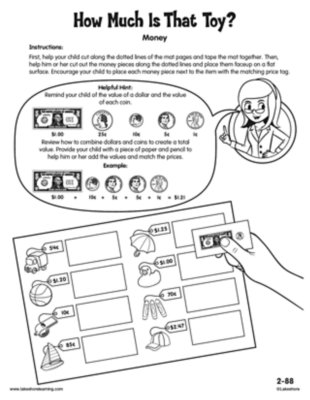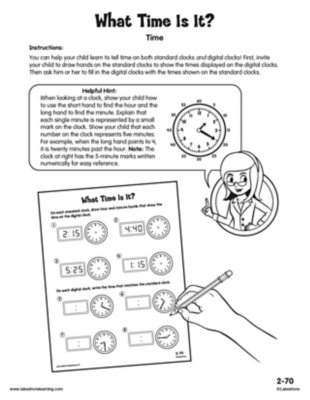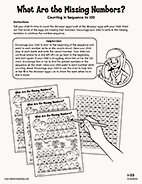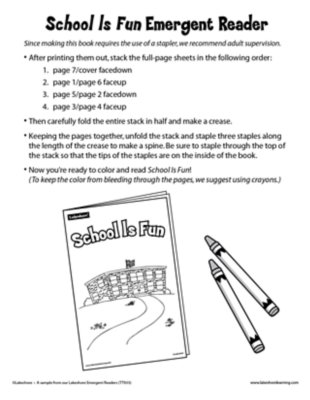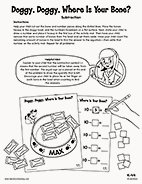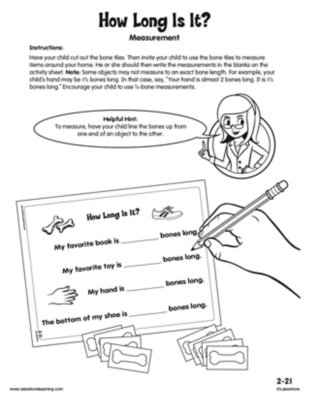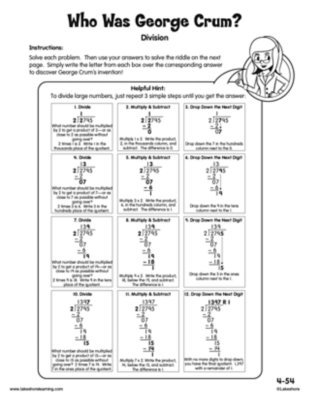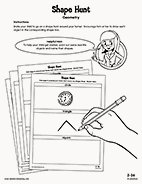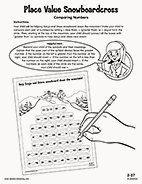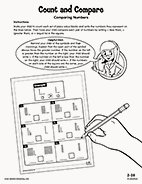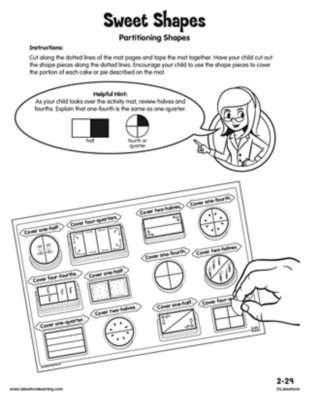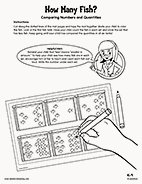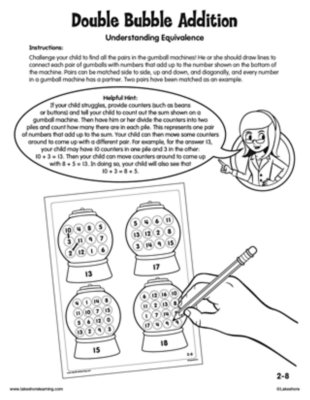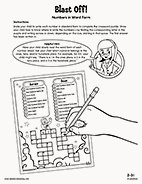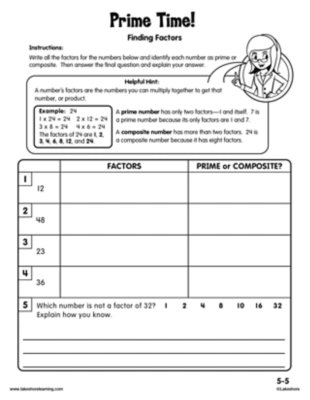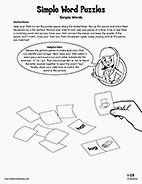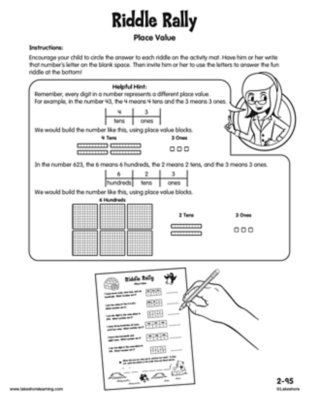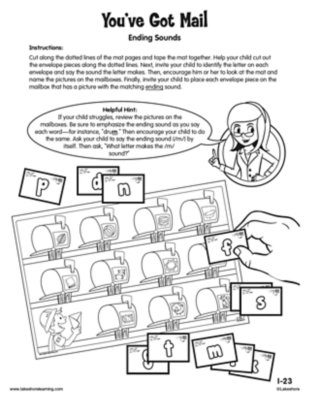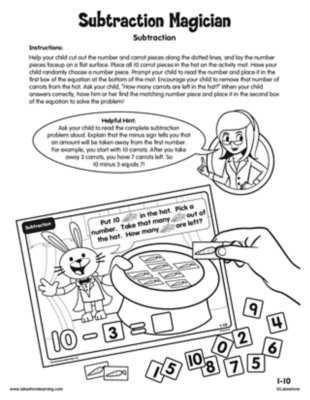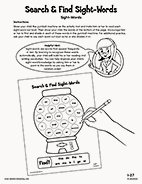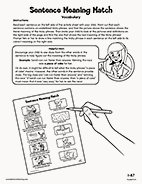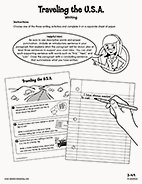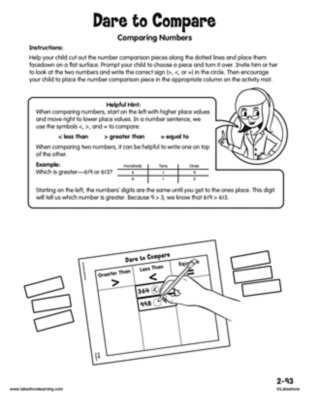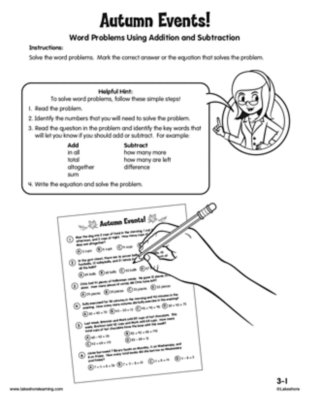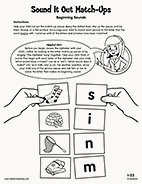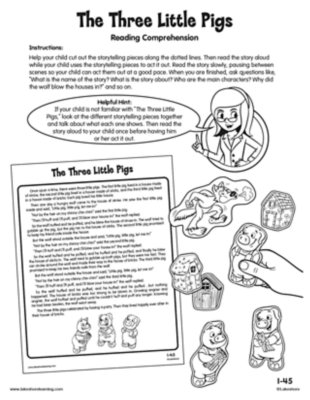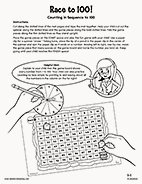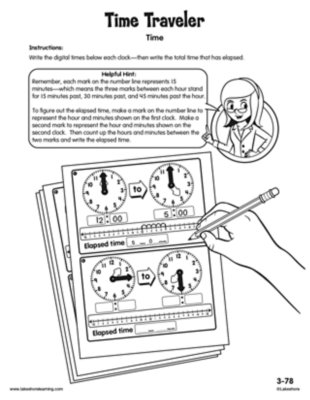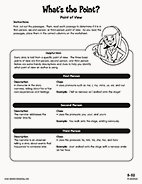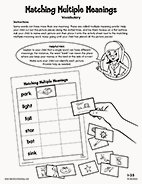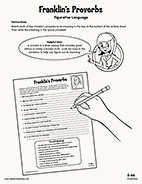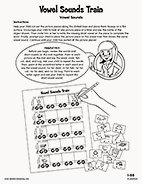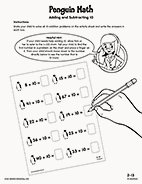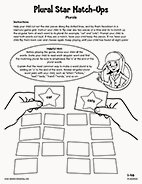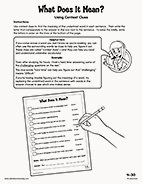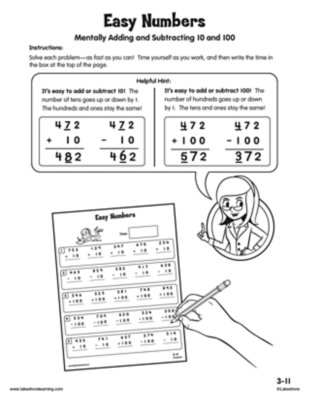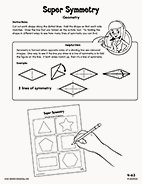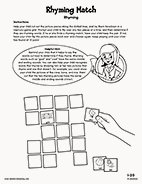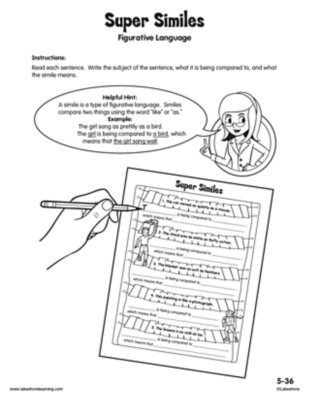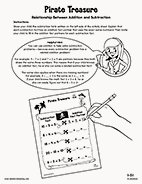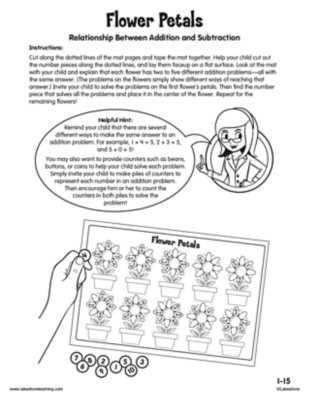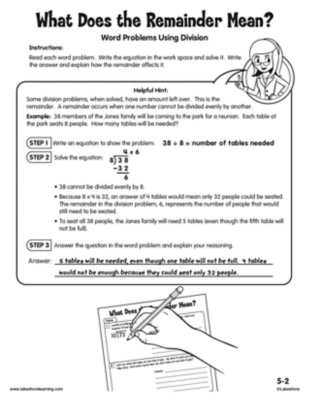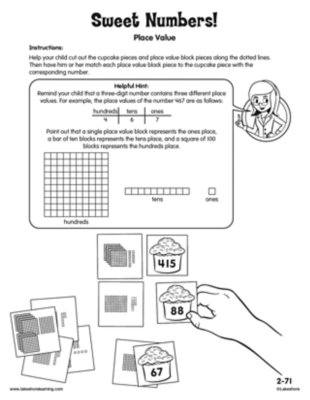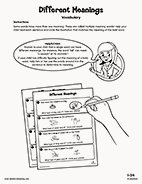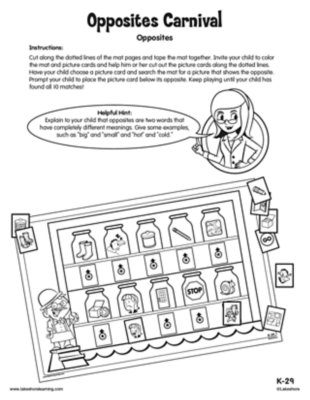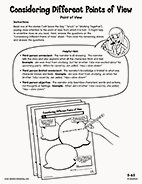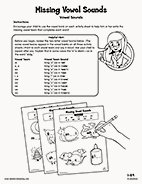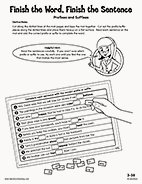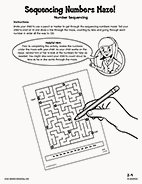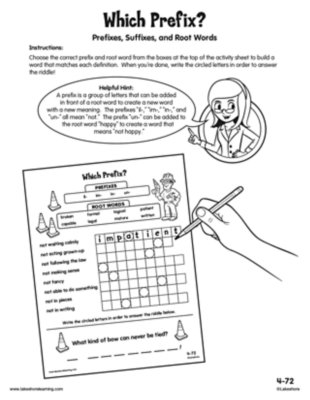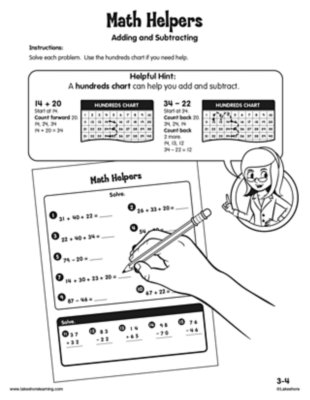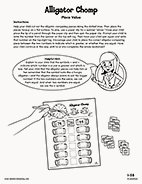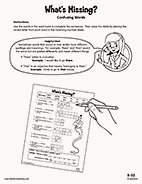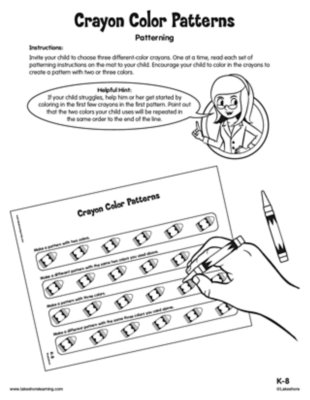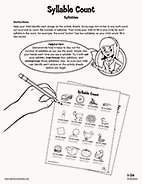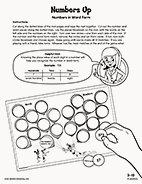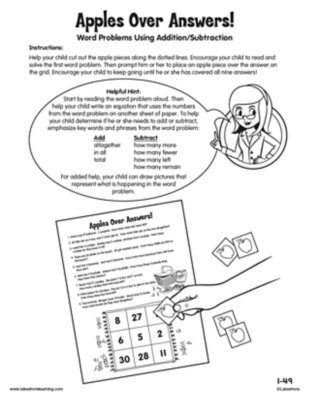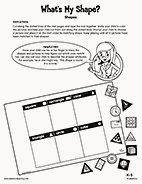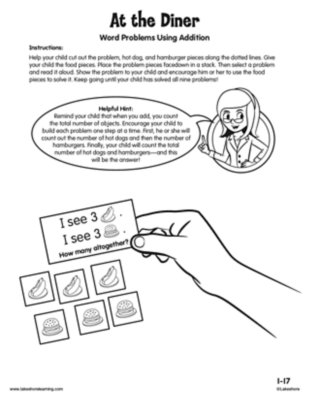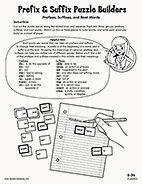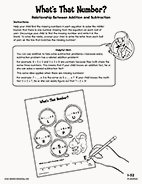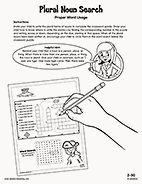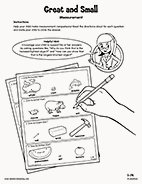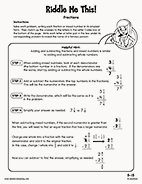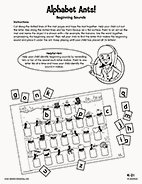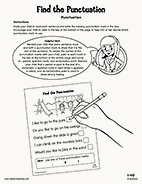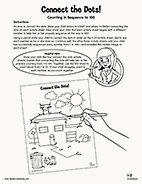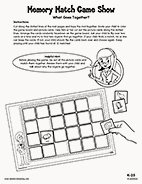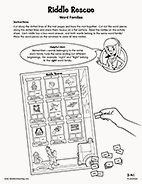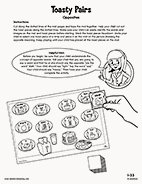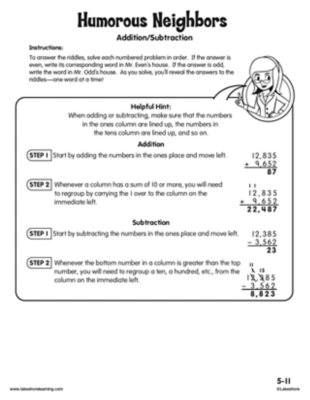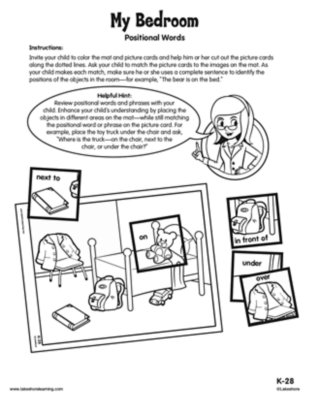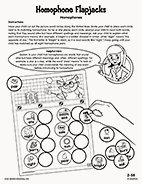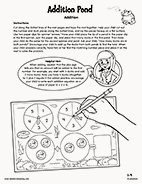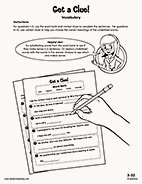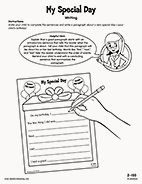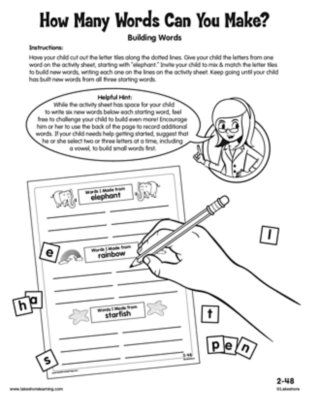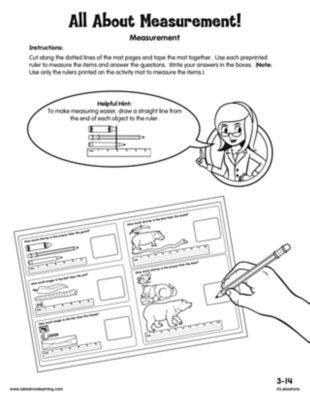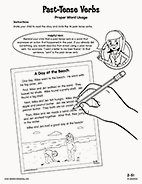Narrow by Grade
Grade
0 results for "art" , here are results for "are"
When entering fifth grade, your child should be able to solve problems involving measurement and conversion of measurement.
View worksheetWhen entering first grade, your child should be able to correctly use positional words, such as “above” and “between.”
View worksheetWhen entering first grade, your child should be able to solve word problems that involve adding or subtracting within 10.
View worksheetWhen entering first grade, your child should be able to describe objects by length or weight and compare objects by identifying which is longer, shorter, heavier or lighter.
View worksheetDuring third grade, your child will be expected to distinguish between shades of meaning among related words—such as “wondered,” “suspected,” “believed” and “knew”—and sort the words in order from the weakest to the strongest meaning.
View worksheetWhen entering third grade, your child should be able to decode—or read and understand—two-syllable words by applying word analysis skills and by sounding out words.
View worksheetWhen entering third grade, your child should be able to fluently add and subtract within 100 using their knowledge of the relationship between addition and subtraction. For example, your child can solve the problem 100 — 15 = 85 by understanding that 85 + 15 = 100.
View worksheetWhen entering third grade, your child should understand that the three digits in a three-digit number represent hundreds, tens and ones. Your child should also be able to write three-digit numbers in expanded form, such as writing 726 as 700 + 20 + 6. Your child should also be able to compare two 3-digit numbers using the greater than (>), less than (<) and equal to (=) symbols.
View worksheetDuring second grade, your child will count dollar bill and coin combinations.
View worksheetDuring second grade, your child will learn to tell and write time from clock faces and digital clocks to the nearest five minutes. For example, 8:05 a.m. or 2:15 p.m.
View worksheetDuring first grade, your child will be asked to count to 120, beginning with any number. For example, 116, 117, 118, 119, 120.
View worksheetDuring kindergarten, your child will learn to add and subtract simple facts. For example, 3 + 7 = 10 and 10 — 5 = 5.
View worksheetWhen entering second grade, your child should be able to measure an object’s length by lining up multiple units of a shorter object end to end and naming how many units long the object is. For example, using paper clips to measure the length of a table.
View worksheetDuring fourth grade, your child will multiply a number with up to four digits by a one-digit number and multiply two-digit numbers by two-digit numbers. Your child will also divide numbers with up to four digits by a one-digit number, including solving problems with remainders.
View worksheetWhen entering second grade, your child should understand the attributes of different shapes—such as a triangle’s three sides—and be able to draw a variety of 2-D shapes.
View worksheetWhen entering second grade, your child should be able to determine if a two-digit number is greater than, less than or equal to another two-digit number and use the >, < and = symbols to show the answer.
View worksheetWhen entering second grade, your child should be able to determine if a two-digit number is greater than, less than or equal to another two-digit number and use the >, < and = symbols to show the answer.
View worksheetWhen entering second grade, your child should be able to divide circles and rectangles into halves and fourths and describe the parts of each using words like “halves,” “fourths” and “quarters.”
View worksheetWhen entering kindergarten, your child should be able to count groups of up to 10 objects and determine if one group of objects is more than, less than or equal to the other.
View worksheetWhen entering second grade, your child should understand what the equal sign means. Your child should also be able to determine whether equations are true or false. For example, 5 + 3 = 6 + 2 is true, but 8 + 2 = 12 — 4 is false.
View worksheetWhen entering second grade, your child should be able to read a number up to one hundred and write its corresponding numeral. For example, forty-one = 41.
View worksheetWhen entering fifth grade, your child should be able to identify whether a number is prime or composite and find all the factor pairs for a whole number between 1 and 100. Factors are the numbers that can be multiplied together to reach another number. For example, the factor pairs for 6 are 1 and 6 (because 1 x 6 = 6) and 2 and 3 (because 2 x 3 = 6).
View worksheetWhen entering first grade, your child should be able to spell simple words by sounding them out, such as “c-a-t” and “f-o-x.”
View worksheetWhen entering second grade, your child should be able to measure an object’s length by lining up multiple units of a shorter object end to end and naming how many units long the object is. For example, using paper clips to measure the length of a table.
View worksheetDuring second grade, your child will learn to identify groups of hundreds, tens and ones when counting. Your child will also learn that the three digits in a three-digit number represent hundreds, tens and ones. For example, there are 7 hundreds, 2 tens and 6 ones in the number 726.
View worksheetWhen entering first grade, your child should be able to identify the beginning and ending sounds in simple words, such as identifying the “b” sound in “bat” or the “n” sound in “pen.”
View worksheetWhen entering first grade, your child should be able to add and subtract simple facts. For example, 3 + 7 = 10 and 10 — 5 = 5.
View worksheetWhen entering first grade, your child should be able to read common, high-frequency words by sight, such as “the,” “of,” “to” and “you.”
View worksheetDuring first grade, your child will learn to figure out the meanings of new words and multiple-meaning words based on the context in which they are used.
View worksheetWhen entering third grade, your child should be able to write a paragraph with an opening, three or more details and a closing.
View worksheetDuring second grade, your child will learn to determine if a three-digit number is greater than, less than or equal to another three-digit number and use the >, < and = symbols to show the answer.
View worksheetWhen entering third grade, your child should be able to solve one-step and two-step word problems involving addition and subtraction within 100.
View worksheetWhen entering first grade, your child should be able to identify the beginning and ending sounds in simple words, such as identifying the “b” sound in “bat” or the “n” sound in “pen.”
View worksheetWhen entering first grade, your child should be able to listen to a story and answer questions about key details, such as identifying characters and events and retelling the story in their own words. Your child should also be able to identify parts of a book—such as the front cover, back cover and title page—as well as the role of authors and illustrators.
View worksheetWhen entering first grade, your child should be able to count to 100 by ones (1, 2, 3, 4…) and tens (10, 20, 30, 40…).
View worksheetDuring third grade, your child will learn to tell and write time to the nearest minute. Your child will also learn to solve problems in which time has elapsed. For example, “The movie started at 5:15 p.m. It was 1 hour and 20 minutes long. What time did the movie end?”
View worksheetDuring fifth grade, your child will learn to describe how a narrator’s or speaker’s point of view influences the way events are described. Your child will also learn to identify the point of view in which a text is written (first person, second person or third person).
View worksheetWhen entering first grade, your child should be able to figure out the meanings of unfamiliar words and multiple-meanings words that they encounter in kindergarten-level texts.
View worksheetDuring fifth grade, your child will learn to interpret examples of figurative language, including similes and metaphors, based on the context in which they are used. Your child will also learn to recognize and explain the meaning of common idioms and familiar sayings and expressions, such as, “A bird in the hand is worth two in the bush.”
View worksheetDuring first grade, your child will learn to distinguish between short and long vowels in spoken one-syllable words, such as the short “a” in “cap” and the long “a” in “cape.” Your child will also learn that final -e and common vowel teams can be used to make long vowel sounds, such as the long “o” in “rope” and “coat.”
View worksheetWhen entering third grade, your child will be expected to know many rules of English grammar and usage, including how to correctly use adjectives, adverbs, pronouns, past-tense verbs and plural words.
View worksheetWhen entering second grade, your child should be able to mentally add 10 to or subtract 10 from any two-digit number—without having to count. For example, 32 + 10 = 42 and 35 — 10 = 25.
View worksheetWhen entering first grade, your child should be able to form regular plural nouns when speaking by adding -s or -es. For example, “dog/dogs” and “wish/wishes.”
View worksheetWhen entering fourth grade, your child should be able to use clues within a sentence to figure out the meaning of an unfamiliar word or phrase. For example, in the following sentence, the underlined portion provides a clue to what the word “aviary” means: The zoo’s aviary was filled with owls, bluebirds, parrots, parakeets and cuckoos.
View worksheetWhen entering third grade, your child should be able to mentally add 10 or 100 to any given number from 100 to 900 without having to write down the problems and work them out. For example, 156 + 10 = 166 and 234 + 100 = 334.
View worksheetDuring fourth grade, your child will learn to identify lines and angles, understand symmetry and classify shapes based on their lines and angles. For example, your child will be able to classify right triangles by seeing that they have a 90-degree angle.
View worksheetWhen entering first grade, your child should be able to recognize and create rhyming sounds.
View worksheetWhen entering fifth grade, your child should be able to figure out the meaning of figurative language, including similes, metaphors and idioms.
View worksheetDuring first grade, your child will learn that addition and subtraction are closely related. For example, your child will solve the problem 10 — 2 = ? by understanding that 8 + 2 = 10.
View worksheetWhen entering first grade, your child should be able to use objects or drawings to answer “How many more make 10?” when given a number. Your child should also be able to use objects or drawings to break apart any number up to 10 in more than one way, such as breaking up the number 7 into 5 and 2, as well as 3 and 4.
View worksheetWhen entering fifth grade, your child should be able to multiply and divide to solve word problems and be able to solve multistep word problems that involve multiplication and division.
View worksheetDuring second grade, your child will learn to identify groups of hundreds, tens and ones when counting. Your child will also learn that the three digits in a three-digit number represent hundreds, tens and ones. For example, there are 7 hundreds, 2 tens and 6 ones in the number 726.
View worksheetWhen entering first grade, your child should be able to figure out the meanings of unfamiliar words and multiple-meanings words that they encounter in kindergarten-level texts.
View worksheetWhen entering kindergarten, your child should be able to understand the most common opposites, such as “happy/sad” and “stop/go.”
View worksheetDuring fifth grade, your child will learn to describe how a narrator’s or speaker’s point of view influences the way events are described. Your child will also learn to identify the point of view in which a text is written (first person, second person or third person).
View worksheetDuring third grade, your child will learn to capitalize the appropriate words in titles, such as the names of books and movies. Your child will also be expected to use commas in written addresses and with quotation marks to show when someone is speaking.
View worksheetDuring first grade, your child will learn to distinguish between short and long vowels in spoken one-syllable words, such as the short “a” in “cap” and the long “a” in “cape.” Your child will also learn that final -e and common vowel teams can be used to make long vowel sounds, such as the long “o” in “rope” and “coat.”
View worksheetWhen entering third grade, your child should be able to figure out the meaning of a new word when a prefix or suffix is added to a familiar word, such as figuring out the meaning of “unhappy” based on knowledge of the word “happy.”
View worksheetWhen entering fourth grade, your child should be able to recognize common features of nonfiction text, such as diagrams, graphs and photo captions. Your child should also be able to use those features to locate information.
View worksheetWhen entering second grade, your child should be able to count, read and write numbers up to 120, beginning with any number. For example, 116, 117, 118, 119, 120.
View worksheetDuring fourth grade, your child will learn to use common, grade-appropriate Greek and Latin prefixes, suffixes and roots to figure out the meaning of a word. For example, “telegraph,” “photograph” and “autograph” all contain the Greek root “graph,” which refers to something that is written or drawn.
View worksheetWhen entering third grade, your child should be able to add and subtract two 3-digit numbers (327 + 216 or 452 — 318), add multiple 2-digit numbers (22 + 14 + 36 + 61) and find the missing number in equations (14 + __ = 19).
View worksheetDuring first grade, your child will learn to compare two-digit numbers using greater than (>), less than (<) or equal to (=) symbols, such as 22 > 12. Your child will also learn that 10 can be thought of as a group of 10 ones—called a “ten.”
View worksheetWhen entering fifth grade, your child should be able to correctly use frequently confused words, such as “to” and “two” or “there” and “their.”
View worksheetWhen entering kindergarten, your child should be able to copy simple patterns, such as ABAB, and determine what comes next in the pattern.
View worksheetWhen entering first grade, your child should be able to count and say the syllables in spoken words. For example, your child should understand that “kitten” has two syllables: kit•ten.
View worksheetWhen entering third grade, your child should be able to read and write numbers within 1,000 using numerals and number words.
View worksheetDuring first grade, your child will be asked to solve word problems that involve adding and subtracting within 20.
View worksheetWhen entering kindergarten, your child should be able to identify simple shapes—such as squares, circles, triangles and rectangles—and describe objects in the real world using shape names.
View worksheetWhen entering first grade, your child should be able to solve word problems that involve adding or subtracting within 10.
View worksheetWhen entering fifth grade, your child should be able to use common, grade-appropriate Greek and Latin prefixes, suffixes and roots to figure out the meaning of a word. For example, “telegraph,” “photograph” and “autograph” all contain the Greek root “graph,” which refers to something that is written or drawn.
View worksheetDuring first grade, your child will learn that addition and subtraction are closely related. For example, your child will solve the problem 10 — 2 = ? by understanding that 8 + 2 = 10.
View worksheetWhen entering second grade, your child should be able to correctly use pronouns, singular and plural words, and past-, present- and future-tense words in sentences.
View worksheetWhen entering first grade, your child should be able to describe objects by length or weight and compare objects by identifying which is longer, shorter, heavier or lighter.
View worksheetWhen entering fifth grade, your child should be able to compare fractions, add and subtract fractions with the same denominator and multiply a fraction by a whole number.
View worksheetWhen entering second grade, your child should be able to subtract within 20 fluently. For example, 18 — 5 = 13 and 20 — 6 = 14.
View worksheetWhen entering kindergarten, your child should be able to identify the initial sounds in words.
View worksheetWhen entering first grade, your child should understand that sentences begin with a capital letter and that the word “I” is also capitalized. Your child should also be able to recognize and name the punctuation marks at the end of sentences, including periods, question marks and exclamation points.
View worksheetWhen entering fourth grade, your child should understand figurative language, such as idioms, and be able to distinguish between the literal and nonliteral meanings of words. For example, “It was a piece of cake!”
View worksheetWhen entering first grade, your child should be able to count to 100 by ones (1, 2, 3, 4…) and tens (10, 20, 30, 40…).
View worksheetWhen entering kindergarten, your child should be able to group common objects into categories and identify reasons for grouping the objects. For example, if given a lamp, sofa and zebra, your child should be able to group the lamp and sofa together because they are household items, while the zebra is not.
View worksheetWhen entering third grade, your child should be able to use common spelling patterns to decode and spell words easily, such as “cart,” “chart” and “smart.”
View worksheetWhen entering first grade, your child should be able to identify opposites for common adjectives and verbs, such as “happy/sad” and “stop/go.”
View worksheetWhen entering fifth grade, your child should be able to easily add and subtract multidigit whole numbers.
View worksheetWhen entering kindergarten, your child should be able to describe the positions of objects and shapes using positional words and phrases, such as “in front of,” “behind,” “over,” “under” and “next to.”
View worksheetWhen entering third grade, your child should understand that the three digits in a three-digit number represent hundreds, tens and ones. Your child should also be able to write three-digit numbers in expanded form, such as writing 726 as 700 + 20 + 6. Your child should also be able to compare two 3-digit numbers using the greater than (>), less than (<) and equal to (=) symbols.
View worksheetWhen entering second grade, your child should be able to figure out the correct meanings of grade-appropriate homophones—words that sound the same but have different meaningss. For example, “to” and “two” or “eye” and “I.”
View worksheetWhen entering first grade, your child should be able to add and subtract simple facts. For example, 3 + 7 = 10 and 10 — 5 = 5.
View worksheetWhen entering third grade, your child should be able to figure out the meanings of unknown words using a variety of strategies, such as looking at the context in which the word is used or consulting a dictionary.
View worksheetWhen entering second grade, your child should be able to write short opinion pieces, informative texts and narratives (stories).
View worksheetWhen entering second grade, your child should be able to build and spell simple words by blending sounds together. For example, when given the letters “a,” “e,” “c,” “b,” “d,” “g” and “s,” your child should be able to use the letters to build and read at least three words.
View worksheetWhen entering third grade, your child should be able to measure, estimate and compare the lengths of objects in standard units, such as inches, feet, centimeters and meters.
View worksheetWhen entering second grade, your child should be able to correctly use pronouns, singular and plural words, and past-, present- and future-tense words in sentences.
View worksheet